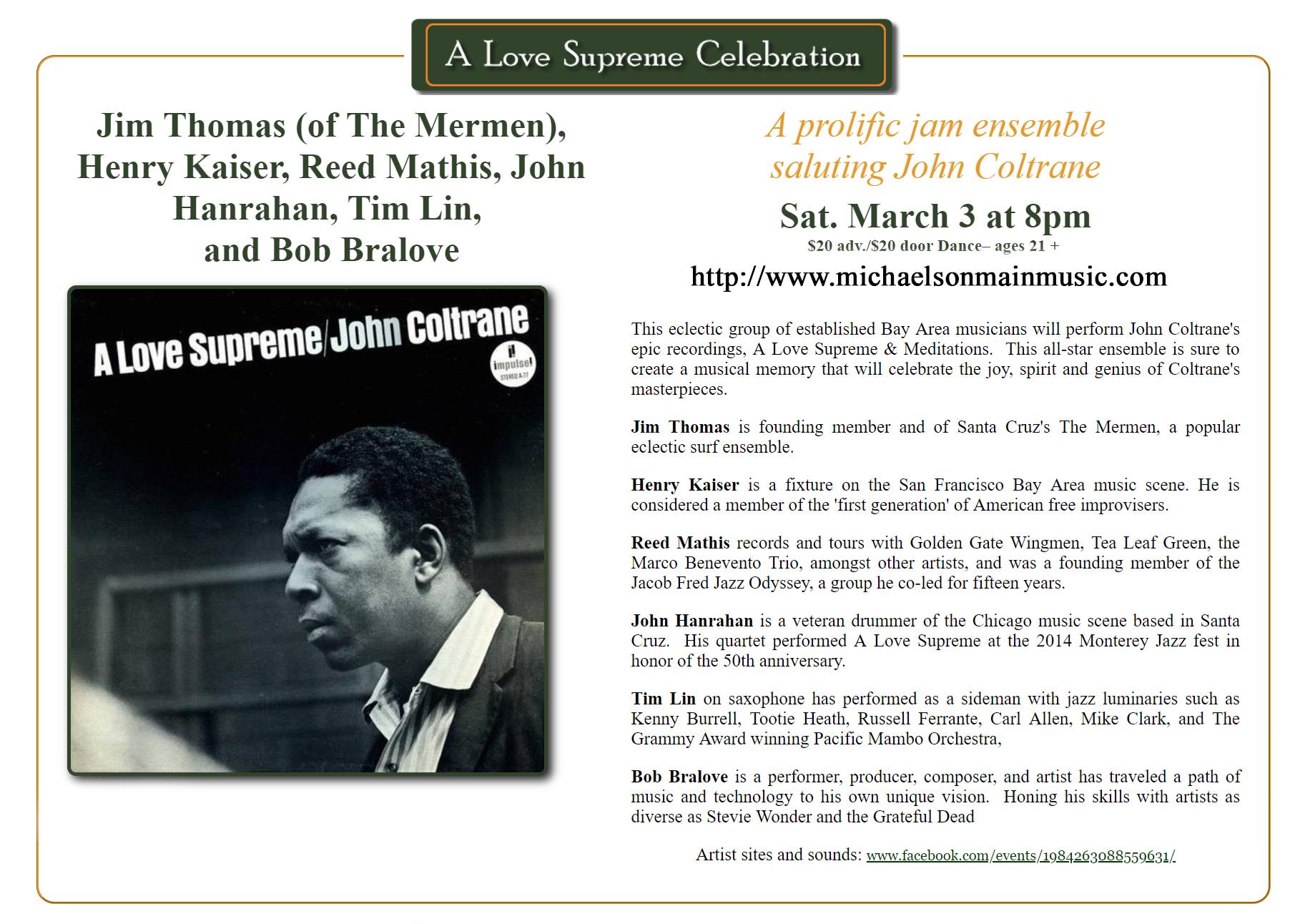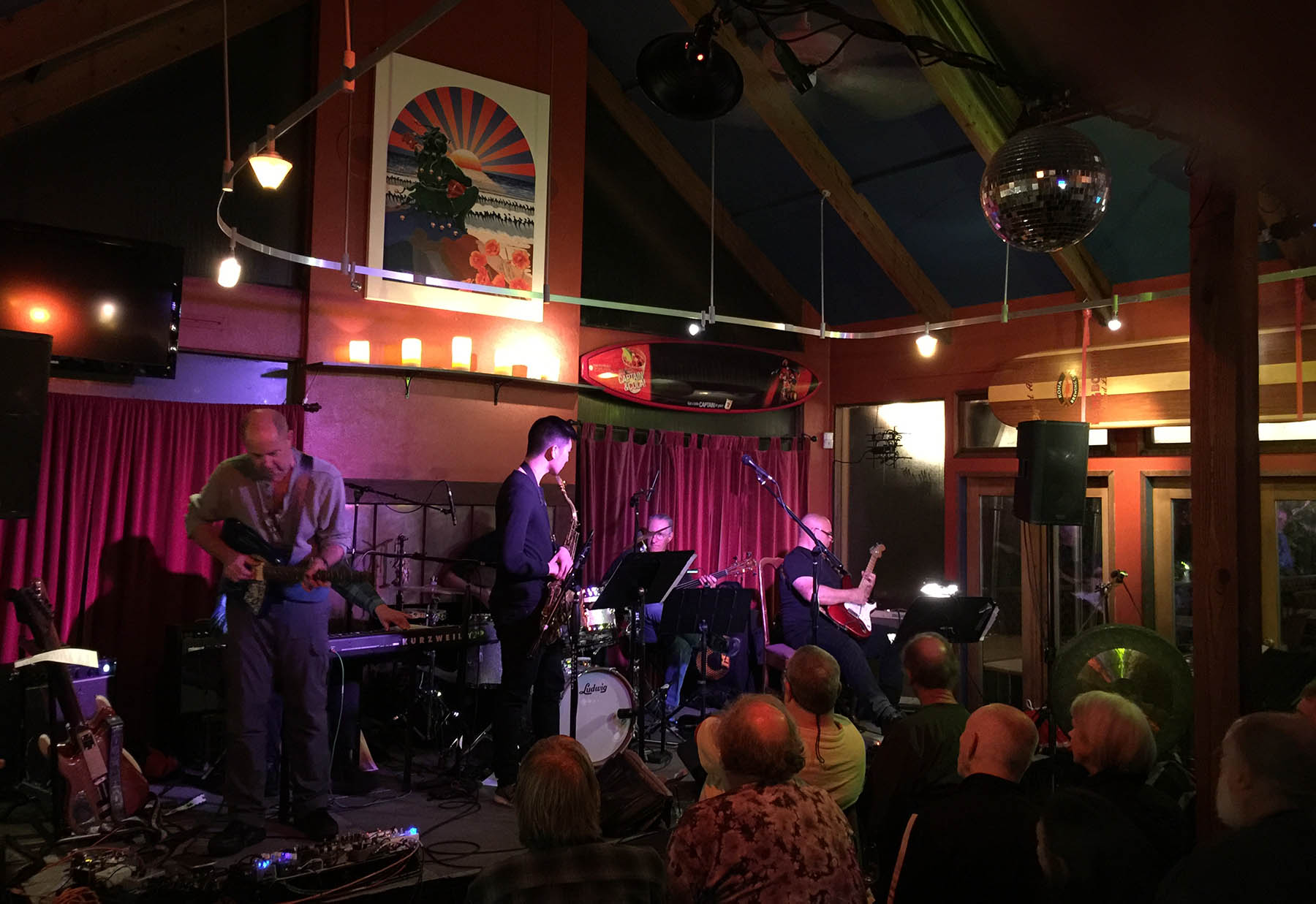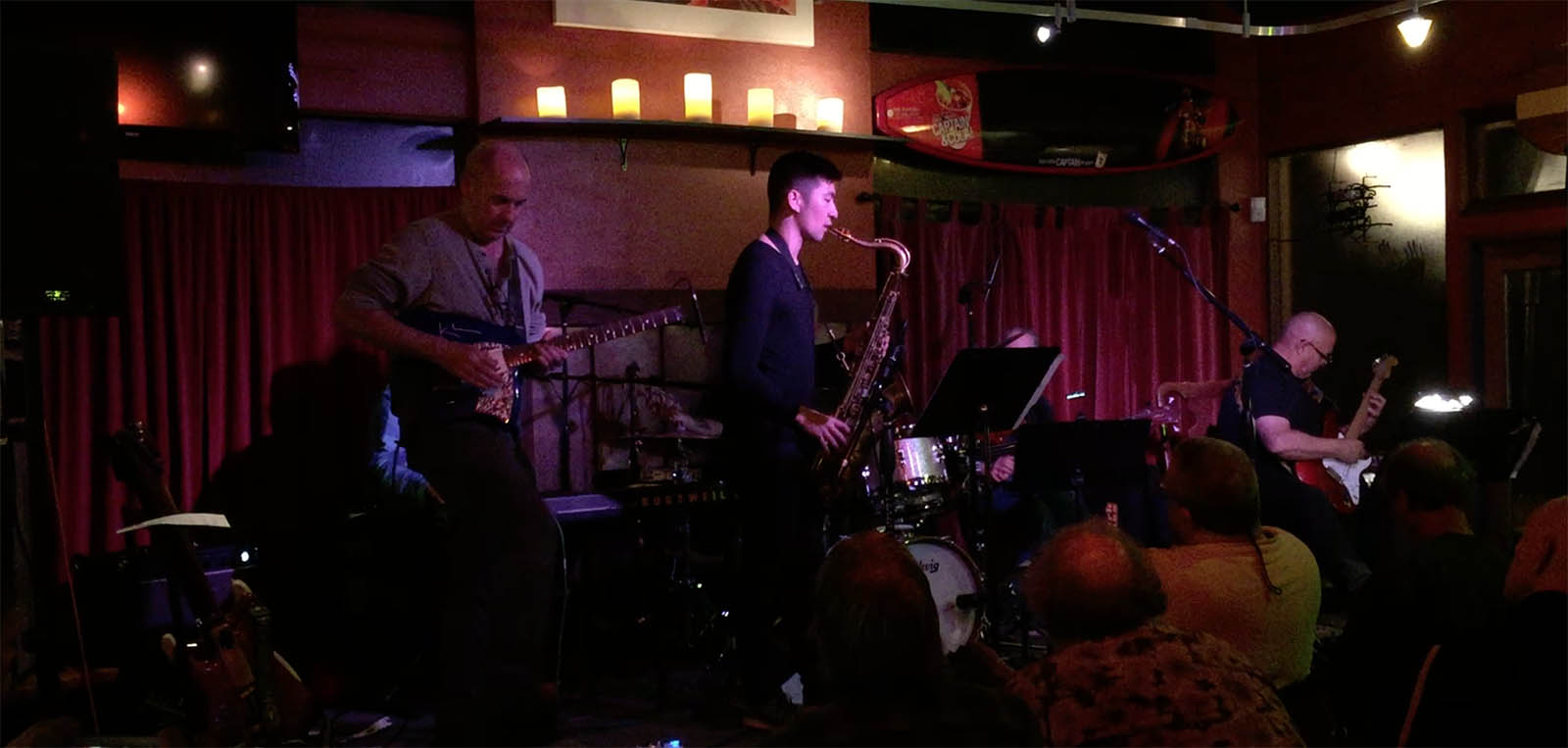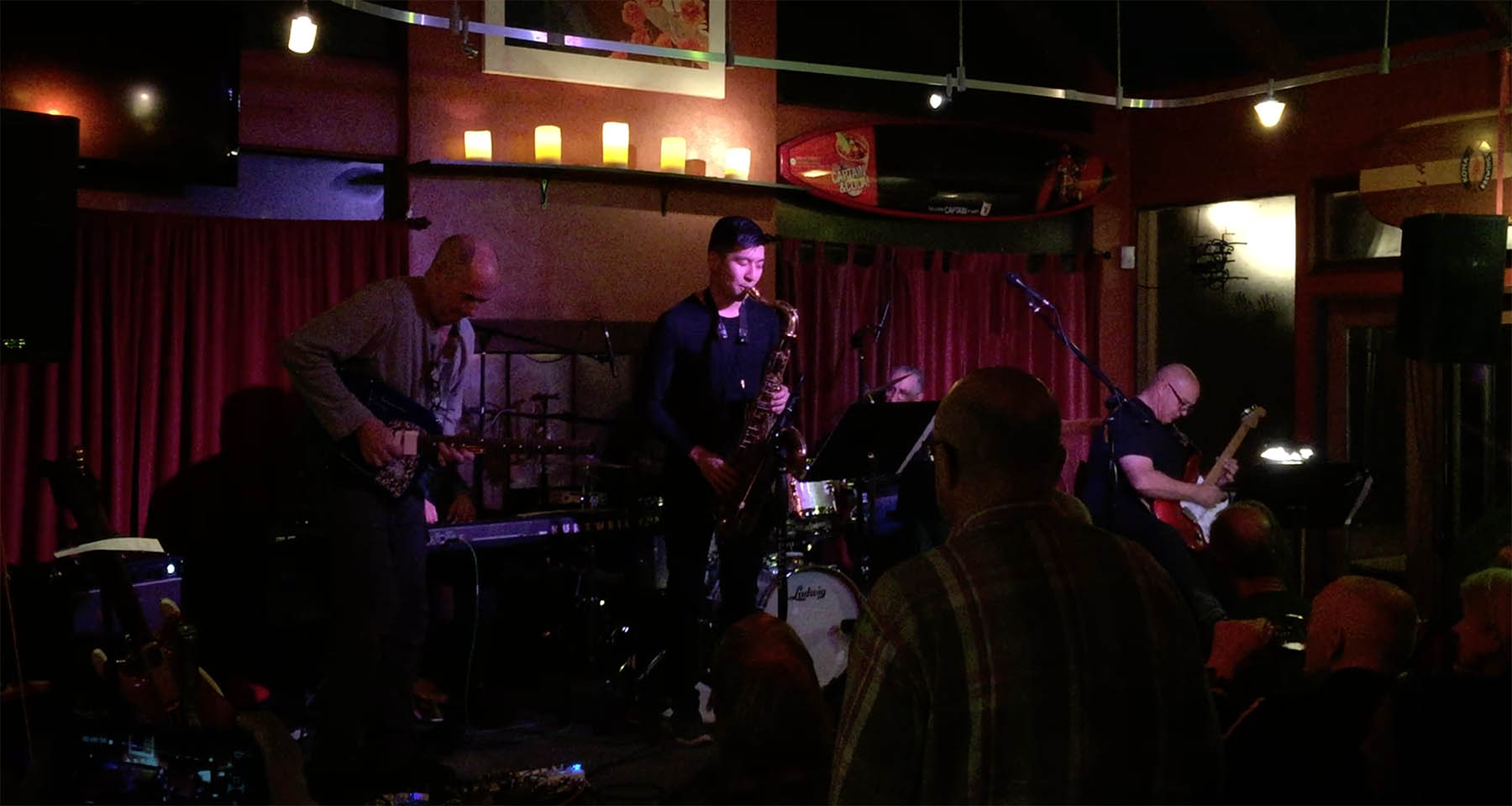A Love Supreme Celebration
with Jim Thomas (of The Mermen), Henry Kaiser,
Reed Mathis, John Hanrahan, Tim Lin, and Bob Bralove
Michael’s On Main
2591 S Main St
Soquel, CA
March 3, 2018
Doors 7:00PM, Show 8:00PM
There was no poster
VIDEOS
The show was amazing. I hope somebody recorded professionally to share. Thank you! (emi)
ARTICLE
Preview: ‘A Love Supreme’ Tribute at Michael’s on Main
Wild ensemble brings a whole new approach to Coltrane’s oft-covered ‘A Love Supreme’
BY ANDREW GILBERT, GOODTIMES
POSTED ON FEBRUARY 27, 2018
John Coltrane wasn’t the first jazz musician to seek the ineffable spirit of God via his music. But with the release of his spiritually charged masterpiece A Love Supreme in January 1965, just weeks after the saxophonist recorded the four-part suite with his epochal quartet, Trane permanently sundered the dualistic notion that jazz, a style born to accompany dancing, partying and other profane pursuits, should never deign to approach the sacred.
Recognized as a landmark upon its release, A Love Supreme has continued to expand its reach over the past 50-odd years. Certainly, no extended instrumental composition from the second half of the 20th century has inspired a more vast and varied array of artists (though many musicians who’ve interpreted A Love Supremedon’t tackle all four movements). Guitarists John McLaughlin and Carlos Santana recorded their 1973 summit Love Devotion Surrender as a tribute and response to the album, focusing only on the opening “Acknowledgement,” with its iconic mantra-like four-note bass line.
“The funny thing about A Love Supreme is that it means so much across different genres, not just to crazy experimental guitarists,” says Henry Kaiser, the crazy experimental guitarist. “It means a lot to a surf guitarist like Jim Thomas. It inspires this passion in people. They love it and feel like it changed their lives.”
Outside of San Francisco’s Saint John Coltrane African Orthodox Church, which has used A Love Supreme as a musical liturgy since opening for worship a few years after the 40-year-old saxophonist’s death from cancer in 1967, no one in the region has done more to make the full suite an active part of the repertoire than Santa Cruz drummer John Hanrahan. He’s been performing the suite around the country in recent years, including a memorable set at the 2014 Monterey Jazz Festival, but the band he brings to Michael’s On Main on Saturday approaches A Love Supreme from an entirely different angle.
Rather than interpreting the suite with an acoustic quartet echoing Trane’s classic ensemble with pianist McCoy Tyner, bassist Jimmy Garrison and drummer Elvin Jones, Hanrahan is plugging in with the divergent electric guitar tandem of Kaiser and Jim Thomas (of the Mermen), electric bass virtuoso Michael Manring, powerhouse tenor saxophonist Tim Lin, and keyboardist Bob Bralove, who brought next-generation digital technology to the Grateful Dead.
It was an encounter with Elvin Jones at Kuumbwa two decades ago that led Hanrahan to A Love Supreme. After a show, he had a chance to talk to the drum legend about the album, and when he purchased a copy, he realized that it was recorded on his birthday (Dec. 9). Reading Coltrane’s liner notes, a passionate prayer (“Let us sing all songs to God”) “just hit home so hard for me,” Hanrahan says. “It really helped me at a time I was going through a difficult period.”
He introduced his Love Supreme tribute in Chicago in 2003, and has been playing it ever since, but it wasn’t until a show in Mill Valley four weeks ago that he expanded the instrumentation. Hanrahan credits veteran booker Tom Miller with suggesting he collaborate with Kaiser, a creative force in free improvisation for four decades.
“Henry doesn’t play guitar, he plays airplane,” Hanrahan says. “He creates this crazy amazing sound. From day one, this piece keeps. It’s so much bigger than all of us. It’s just been unbelievable. We sold out at Sweetwater. The whole Dead community is involved. I’m so excited to bring this to Santa Cruz.”
Like at Sweetwater, the band follows Love Supreme with a second set dedicated to Meditations, the spiritual sequel that Coltrane recorded a year later. More protean than ever, Trane’s music had become more tonally and rhythmically untethered, and the addition of tenor saxophonist Pharoah Sanders provided an ecstatic foil for the inveterate searcher.
“Most recorded covers take a really different attitude than Coltrane would have liked,” Kaiser says. “I think it’s a door to go through, and you get different things every time you go through it. A lot of people interpret it as a tribute to this specific recording, but we’ve made it electric Love Supreme, more like what ROVA did with Electric Ascension,” a live album and DVD by the great Bay Area saxophone quartet and a stellar cast of musicians exploring Coltrane’s late-career free jazz communion.
Kaiser is onto something. Always in progress, Coltrane didn’t intend the Dec. 9 Love Supreme session as a final statement. According to Ashley Kahn, who wrote the 2003 book A Love Supreme: The Story of John Coltrane’s Signature Album, the suite was always intended for a larger ensemble.
“Purely on a musical level, it’s a suite that opens itself up to interpretation,” Kahn told me before a concert marking the 50th anniversary of A Love Supreme’s release. “Coltrane’s original structural plan was to augment the quartet with two more horns and three Latin percussionists. You could see that Coltrane looked at the music as a fluid thing.”
In the hands of Kaiser, Manring, and Hanrahan, et al, you can expect that liquid to be molten.



